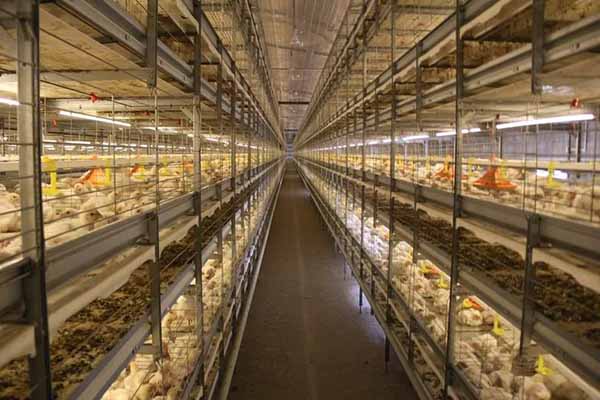How to Reduce the Mortality Rate in Uganda Chicken Farms
Time : 2025-04-25
In Uganda, the poultry industry has been growing rapidly, but with this growth comes the challenge of managing and reducing the mortality rate in chicken farms. Keeping chickens healthy and minimizing deaths is crucial for the sustainability and profitability of any poultry business. Here’s a comprehensive guide on how to reduce the mortality rate in Uganda chicken farms.
1. Hygiene and Sanitation
1.1 Regular Cleaning
The first step to reducing mortality in chicken farms is maintaining a high level of hygiene and sanitation. This starts with regular cleaning of the coop and surrounding areas. The coop should be cleaned at least once a week to remove any waste, feathers, and dirt that can harbor pathogens.
1.2 Disinfection
Disinfecting the coop after each cleaning cycle is essential. Use a disinfectant that is effective against the pathogens commonly found in poultry farms. Always follow the manufacturer’s instructions when using disinfectants.
1.3 Biosecurity Measures
Implement biosecurity measures to prevent the introduction of diseases into your farm. This includes limiting access to the farm, requiring visitors to wear protective clothing, and preventing wild birds and pests from entering the coop.
2. Nutrition and Feeding
2.1 Balanced Diet
A balanced diet is crucial for the health of your chickens. Provide a diet that is rich in vitamins, minerals, and proteins. It’s important to avoid overfeeding, as this can lead to obesity and other health issues.
2.2 Fresh Water
Ensure that your chickens have access to fresh, clean water at all times. Water quality is as important as food quality, and any contamination can lead to waterborne diseases.
2.3 Feeding Practices
Implement proper feeding practices such as providing feed in covered feeders to prevent waste and contamination. Also, avoid overcrowding in the feeding area to reduce the risk of disease transmission.
3. Health Management
3.1 Routine Health Checks
Regularly check your chickens for signs of illness. Early detection of diseases can significantly reduce mortality rates. Look for changes in behavior, feather quality, and general appearance.
3.2 Vaccination Programs
Implement a vaccination program to protect your chickens against common poultry diseases. Consult with a veterinarian to create a vaccination schedule tailored to your farm’s needs.
3.3 Disease Monitoring
Keep a record of any diseases that occur on your farm. This information can help you identify patterns and take preventive measures to control the spread of diseases.
4. Environmental Control
4.1 Temperature and Humidity
Maintain optimal temperature and humidity levels in the coop. Chickens are sensitive to extreme temperatures and humidity, which can lead to respiratory diseases and heat stress.
4.2 Air Quality
Ensure good air quality by providing adequate ventilation. Poor air quality can lead to respiratory diseases and other health issues.
4.3 Comfortable Resting Areas
Provide comfortable resting areas for your chickens. This could include perches or nests that are clean and well-maintained.
5. Genetics and Breeding
5.1 Selecting the Right Breed
Choose the right breed of chickens that are suited to the climate and conditions of your farm. Some breeds are more resistant to diseases and can adapt better to various environmental factors.
5.2 Proper Breeding Practices
Implement proper breeding practices to ensure that your chickens are healthy and productive. This includes selecting healthy parents and avoiding inbreeding.
6. Training and Education
6.1 Staff Training
Ensure that all staff members are properly trained in poultry management and health. Knowledgeable staff can make a significant difference in reducing mortality rates.
6.2 Continuous Learning
Stay updated with the latest advancements in poultry farming. Attend workshops, seminars, and training sessions to improve your skills and knowledge.
Conclusion
Reducing the mortality rate in Uganda chicken farms requires a comprehensive approach that addresses hygiene, nutrition, health management, environmental control, genetics, and training. By implementing these strategies, you can create a healthier, more productive poultry farm that contributes to the growth of the industry.












